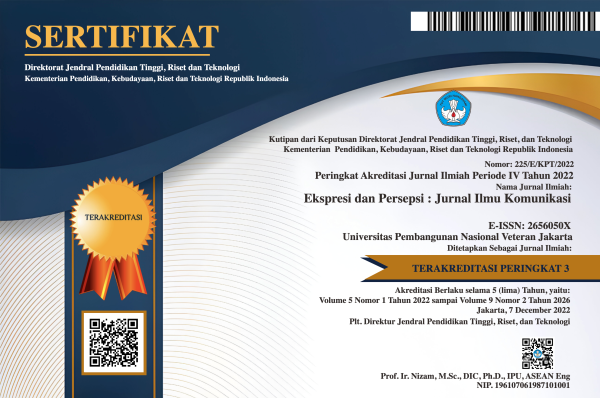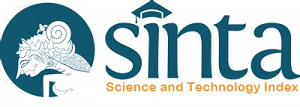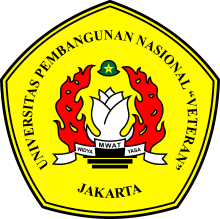The Process of Adopting Information and Communication Technology Innovations in Online Learning for Students with Autism Spectrum Disorder During the COVID-19 Pandemic
DOI:
https://doi.org/10.33822/jep.v7i2.6295Keywords:
autism spectrum disorder, information and communication technology, innovation adoption, online learningAbstract
Online learning demands specific teacher preparation, particularly in the effective utilization of Information and Communication Technology (ICT) innovations tailored to the unique needs and capabilities of students with autism spectrum disorder (ASD). This study focused on the ICT innovations adopted by educators at the London School Beyond Academy (LSBA), a vocational school catering to autistic students in Jakarta, during the COVID-19 pandemic. A total of 8 main informants who are educators were selected by snowbowling sampling. Data collection involved multiple methods, including in-depth interviews, observations, and literature reviews. Documentation included archiving interview recordings, interview transcripts, and observation notes. The data analysis technique was carried out by adopting the conceptual framework of "School Improvement" (Huberman & Miles, 1984). The findings revealed that the adoption of technological innovations at LSBA is a collaborative effort involving school administrators, educators, and academics, all of whom work together to tailor the use of ICT to the unique abilities of each ASD student. During the assessment of new students, psychologists and educators encountered challenges in conducting online observations. Consequently, this circumstance necessitated adjustments to the learning system to accommodate the diverse abilities of ASD students.
References
Adams, D., Simpson, K., Davies, L., Campbell, C., & Macdonald, L. (2019). Online learning for university students on the autism spectrum: A systematic review and questionnaire study. Australasian Journal of Educational Technology, 35(6), 111–131. https://doi.org/10.14742/ajet.5483
Ardiyani, I. D., Febriyana, N., Setiawati, Y., & Kalalo, R. T. (2020). Parent Training Program for Autism Spectrum Disorder During The Covid-19 Pandemic Period in Indonesia. Jurnal Psikiatri Surabaya, 9(2), 60. https://doi.org/10.20473/jps.v9i2.19123
Ayuningtyas, F., Intyaswati, D., Supratman, S., Setiawan, H., & Lusia, A. (2022). Studi Fenomenologi: Pengalaman Guru Insan Berkemampuan Khusus Dalam Menjalani Profesinya Di Rumah Autis Cabang Depok. In Ekspresi Dan Persepsi : Jurnal Ilmu Komunikasi (Vol. 5, Issue 1, pp. 16–27). https://doi.org/10.33822/jep.v5i1.3377
Buchnat, M., & Wojciechowska, A. (2020). Online education of students with mild intellectual disability and autism spectrum disorder during the COVID-19 pandemic. Interdyscyplinarne Konteksty Pedagogiki Specjalnej, 29, 149–171. https://doi.org/10.14746/ikps.2020.29.07
Creswell, J. W. (2021). Research Design: Pendekatan Metode Kualitatif, Kuantitatif dan Campuran. Penerbit Pustaka Pelajar.
Dahlstrom-Hakki, I., Alstad, Z., & Banerjee, M. (2020). Comparing synchronous and asynchronous online discussions for students with disabilities: The impact of social presence. Computers and Education, 150, 103842. https://doi.org/10.1016/j.compedu.2020.103842
Daruka, Z. H., & Nagavci, N. (2020). The impact of the COVID-19 pandemic on the Education of Children with Disabilities. StatCan COVID-19: Data to Insights for a Better Canada, 45280001. https://doi.org/10.13140/RG.2.2.17807.41125
Hameed, N. (2020). Home schooling challenges for C hildren with Autism during Covid 19 pandemic. Interventional Pediatrics & ResearcH, 3(1), 29–30.
Huberman, A. M., & Miles, M. B. (1984). Innovation up close: How School Improvement Works. Plenum.
Jhurree, V. (2005). Technology integration in education in developing countries : Guidelines to policy makers 1. International Education Journal, 6(4), 467–483.
Kessel, R. van, Steinhoff, P., Varga, O., & ... (2020). Autism and education—Teacher policy in Europe: Policy mapping of Austria, Hungary, Slovakia and Czech Republic. In Research in …. Elsevier. https://www.sciencedirect.com/science/article/pii/S0891422220301645
Marty, Meghan & Segal, D. (2017). Diagnostic and statistical manual of mental disorders (DSM). Knowledge Organization, 44(8), 668–676. https://doi.org/10.5771/0943-7444-2017-8-668
Mendoza, A. L., Mckeithan, G. K., & Griswold, D. E. (2019). Effective Home School Programming for Students with Autism Spectrum Disorder. Home School Researcher, 34(3), 1–5. https://www.researchgate.net/publication/334416856_Effective_Home_School_Programming_for_Students_with_Autism_Spectrum_Disorder
Mishra, P., & Koehler, M. J. (2006). Technological Pedagogical Content Knowledge: A Framework for Teacher Knowledge. Teachers College Record: The Voice of Scholarship in Education, 108(6), 1017–1054. https://doi.org/10.1177/016146810610800610
Pacheco, J. A. (2020). The “new normal” in education. 0123456789.
Puspita, L. P. A. S., Padmadewi, N. N., & Wahyuni, L. G. E. (2019). Instructional Teaching Media to Promote Autistic Student’s Learning Engagement. Journal of Education Research and Evaluation, 3(2), 58. https://doi.org/10.23887/jere.v3i2.20975
Rahmawati, A., & Sujono, F. K. (2021). Digital Communication through Online Learning in Indonesia: Challenges and Opportunities. Jurnal ASPIKOM, 6(1), 61. https://doi.org/10.24329/aspikom.v6i1.815
Roshinah, F. (2016). Pelaksanaan Asesmen Untuk Layanan Pendididkan Anak Autis. Widia Ortodidaktika, 5, 1156–1168.
Seng, A. K. K., Jain, J. A., Ponniah, L. S., & Jegathesan, A. J. (2022). Learning through Online Synchronous and Asynchronous Communication among Adolescents with Autism Spectrum Disorder: A Conceptual Discourse. International Journal of Information and Education Technology, 12(12), 1407–1416. https://doi.org/10.18178/ijiet.2022.12.12.1765
Stenhoff, D. M., Pennington, R. C., & ... (2020). Distance education support for students with autism spectrum disorder and complex needs during covid-19 and school closures. Rural Special Education …. https://doi.org/10.1177/8756870520959658
Thirumanickam, A., Raghavendra, P., McMillan, J. M., & van Steenbrugge, W. (2018). Effectiveness of video-based modelling to facilitate conversational turn taking of adolescents with autism spectrum disorder who use AAC. AAC: Augmentative and Alternative Communication, 34(4), 311–322. https://doi.org/10.1080/07434618.2018.1523948
Tse-kian, K. N. (2003). Using multimedia in a constructivist learning environment in the Malaysian classroom The constructivist learning paradigm. Australian Journal of Educational Technology, 19(3), 293–310.
Wiradharma, G., Ruliana, P., & Prisanto, G. F. (2021). Pemanfaatan Media Pembelajaran Daring Dalam Proses Belajar Mengajar. In Ekspresi Dan Persepsi : Jurnal Ilmu Komunikasi (Vol. 4, Issue 2, pp. 157–172). https://doi.org/10.33822/jep.v4i2.2589
Downloads
Published
Issue
Section
License
Copyright (c) 2024 Dwi, Djuara P. Lubis, Pudji Muljono, Ninuk Purnaningsih

This work is licensed under a Creative Commons Attribution-NonCommercial 4.0 International License.














